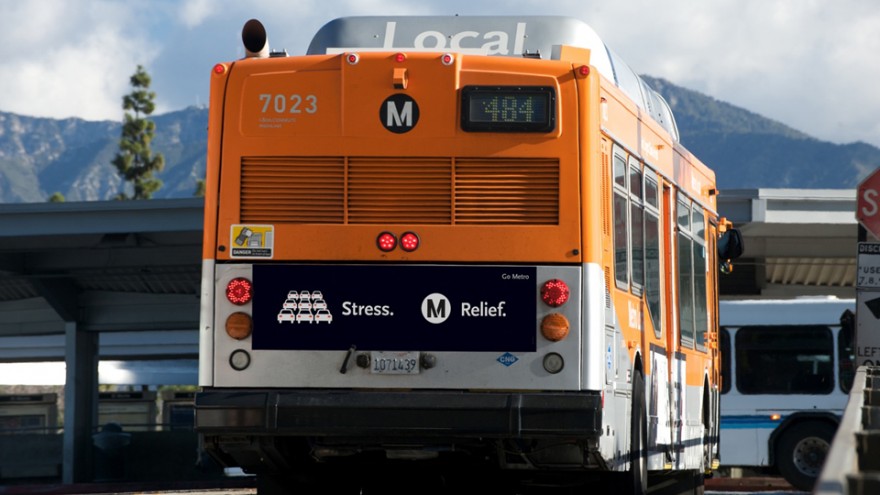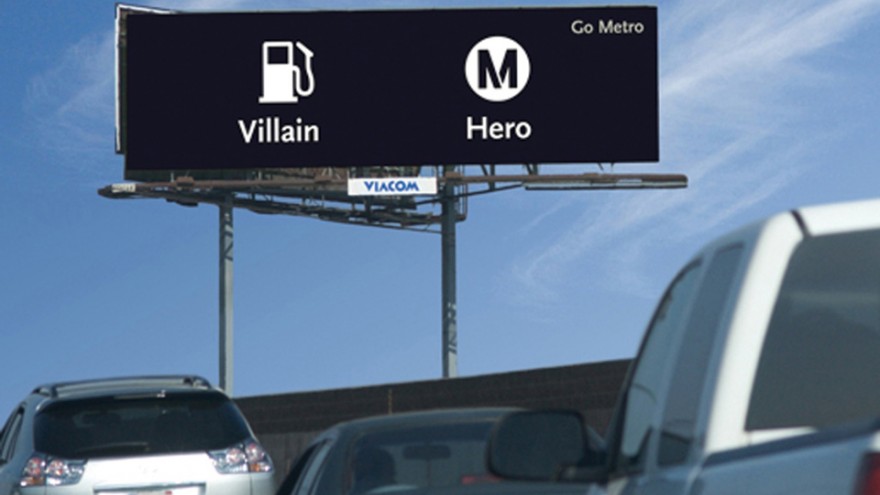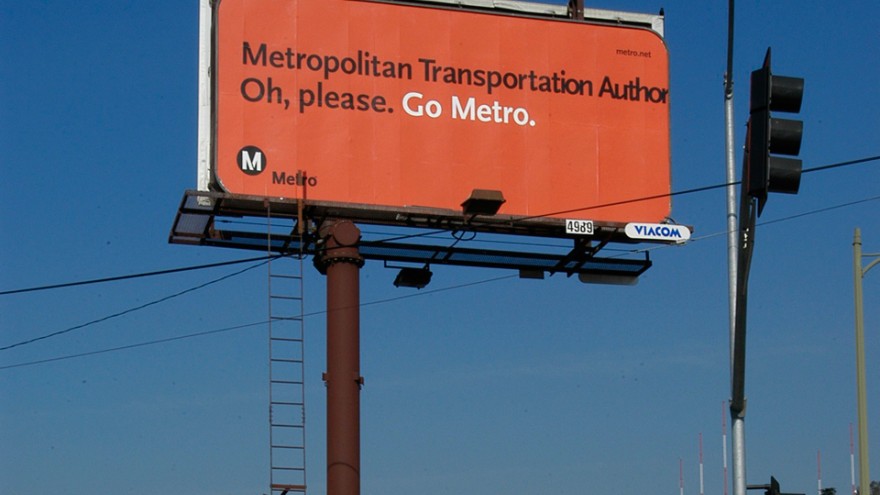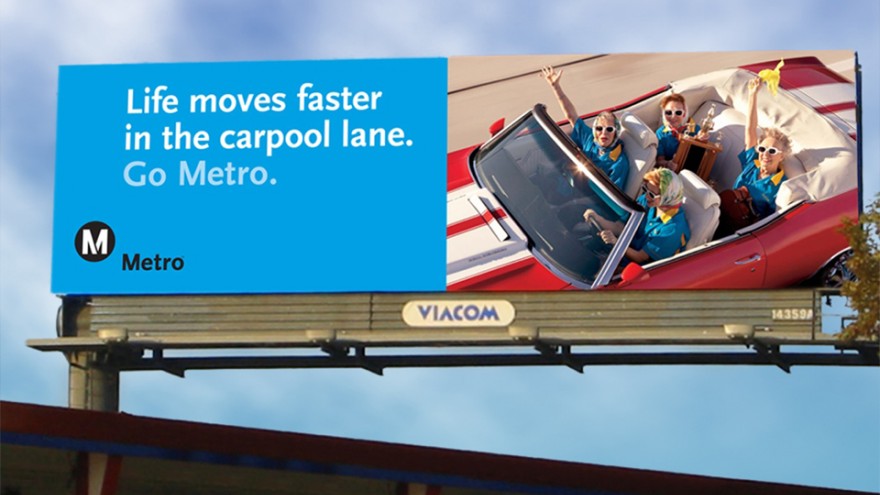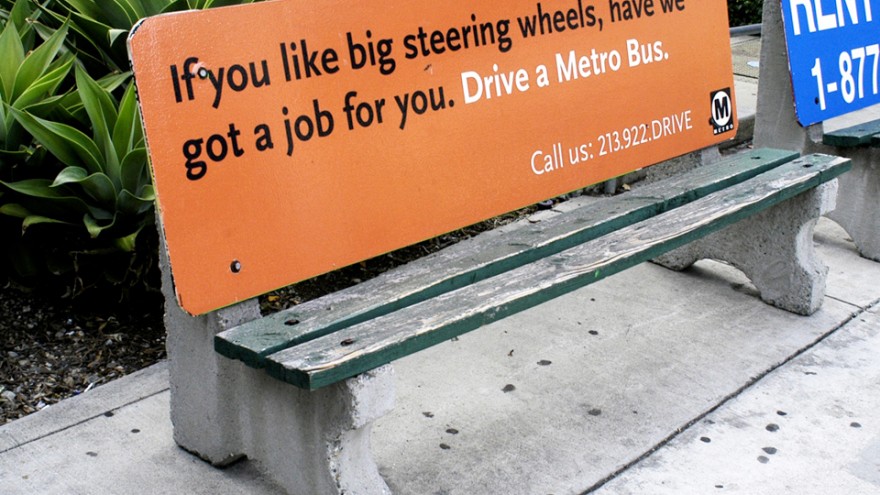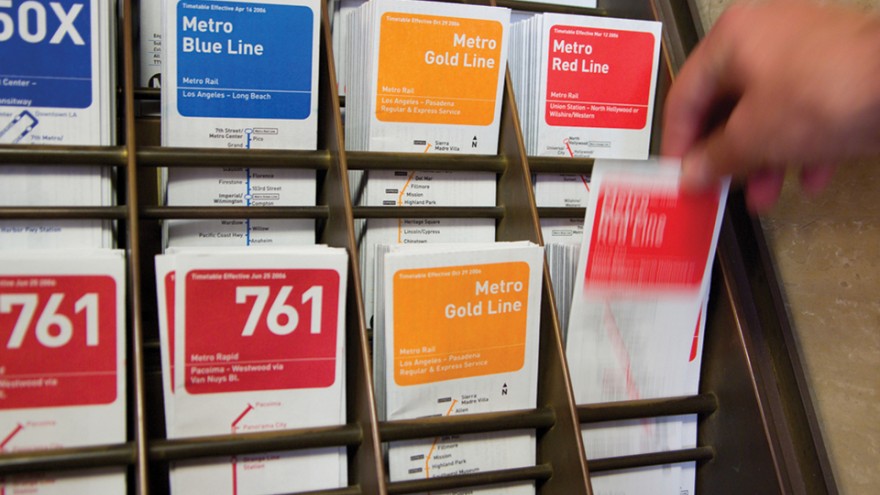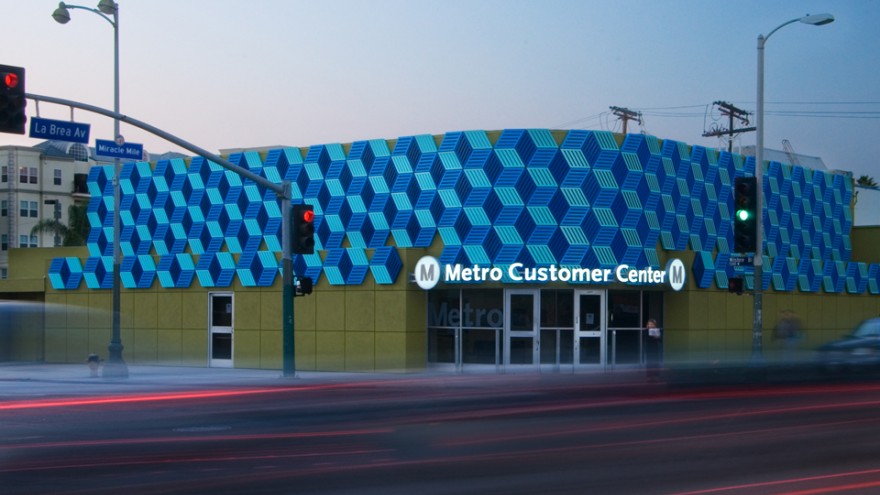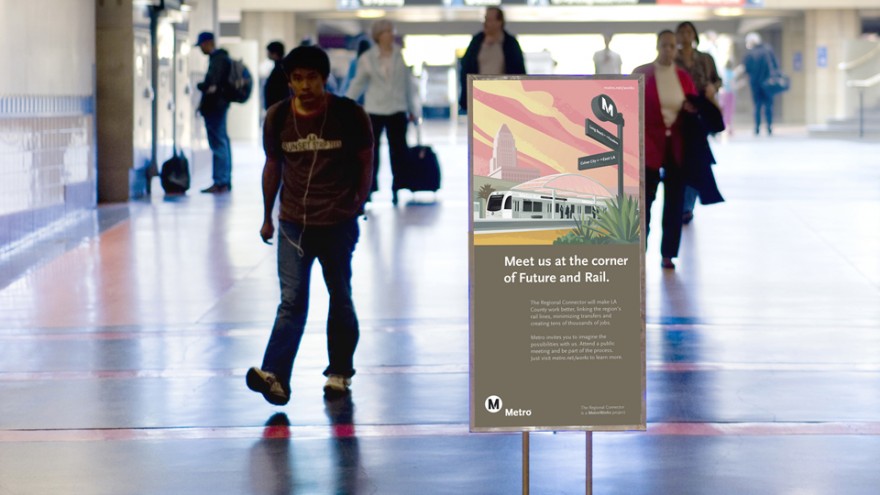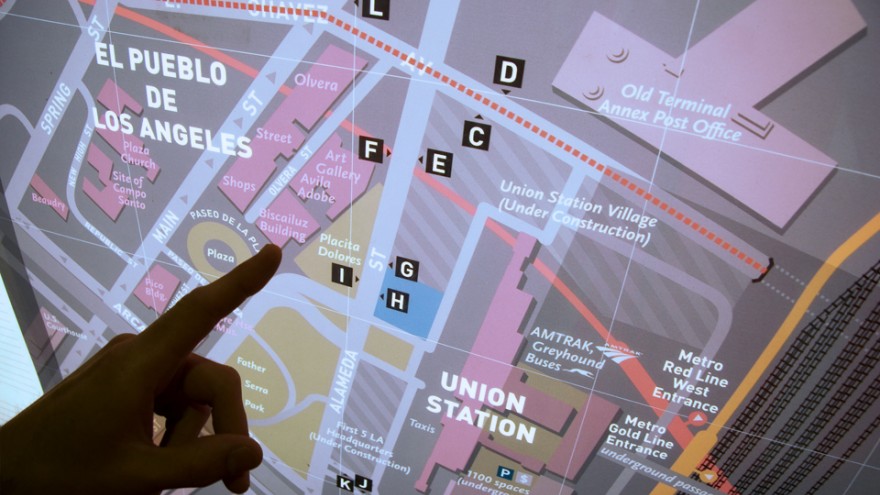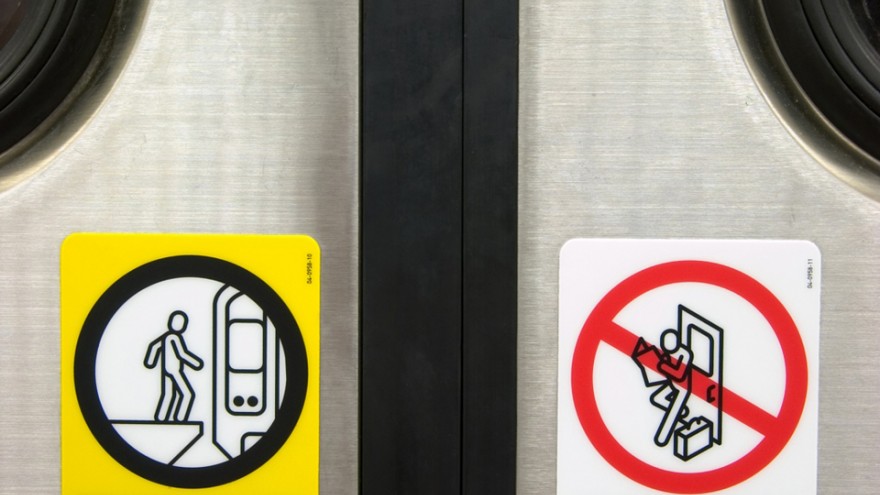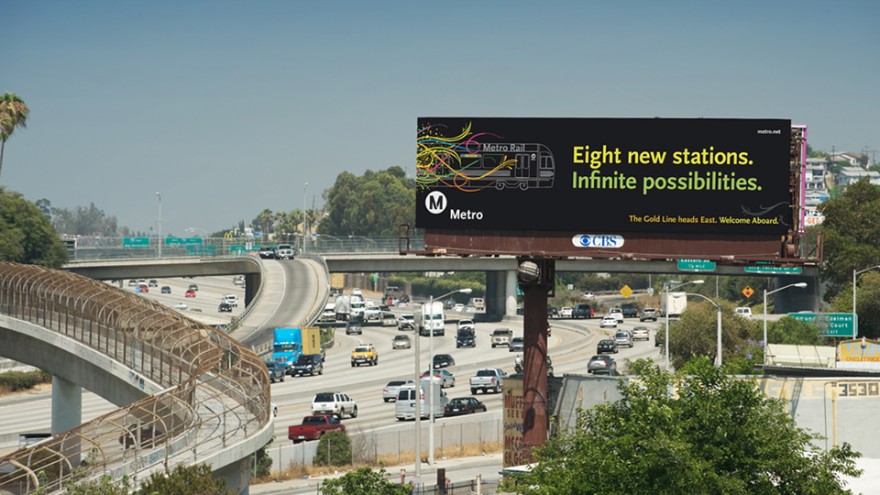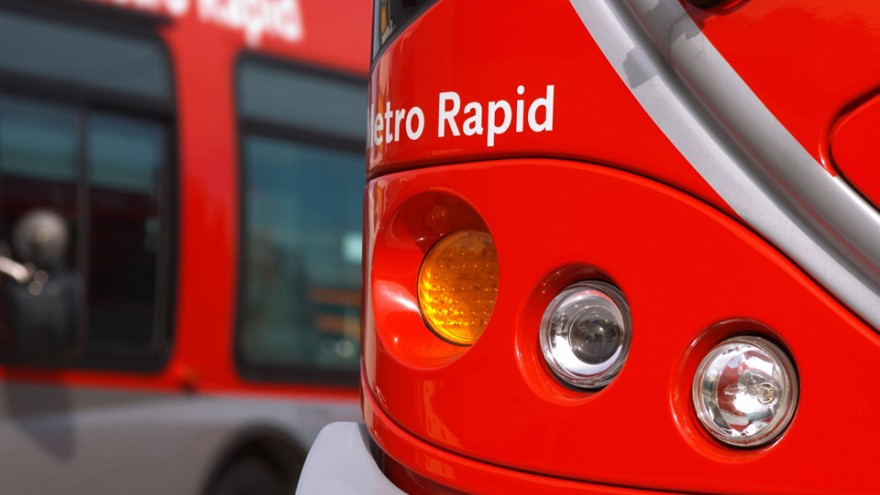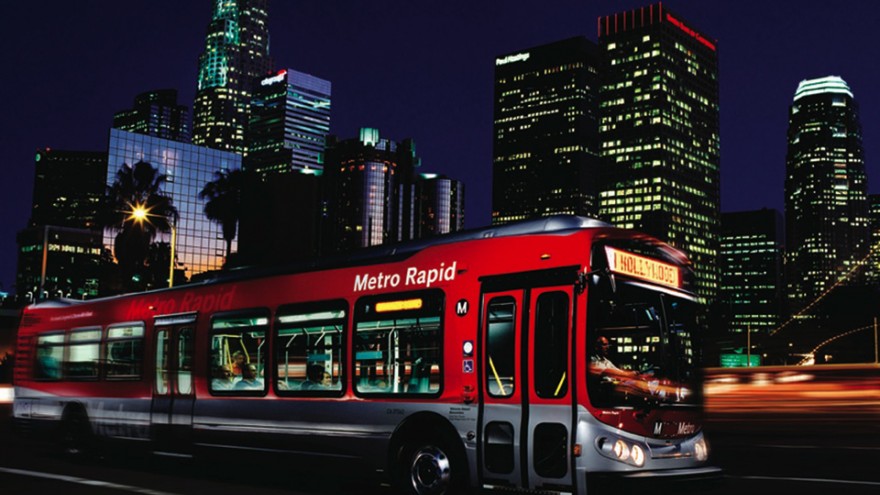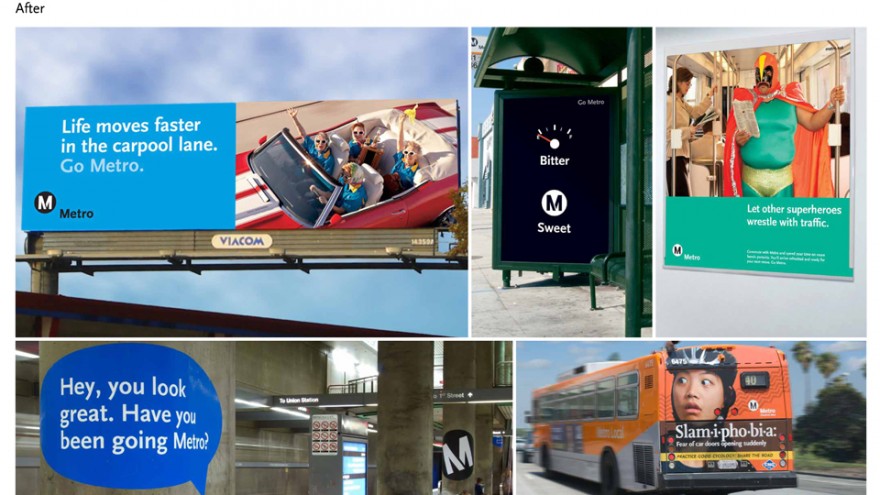Ten years ago public transport was in the blind spot in Los Angeles. Despite a well developed, integrated, safe and reliable system, Angelinos just weren’t all that interested in leaving theirs cars – of which there are some 5.8 million registered automobiles in the region – at home and commuting by bus or train.
A need to curb the city’s sprawling car culture was recognised by the Los Angeles County Metropolitan Transportation Authority (known as the MTA), who employed Michael Lejeune in 2002 and tasked him with “making public transport cool”.
An LA native, Lejeune studied communications at UCLA and held a number of jobs, among which in the advertising and entertainment industry, before he took on the mammoth task of rebranding public transport in his home county.
Lejeune says when he joined the MTA in 2002, where he worked with a new management team headed by transportation turnaround specialists, the time was “ripe and real for change”. He was appointed creative director and the idea was that his team would be the creative force leading and integrating different aspects of communication, such as advertising, marketing, branding and customer service.
The goal for Lejeune was to use the money that was available, while paying heed to the vision of the organisation, to then work towards the goal of increasing ridership in Los Angeles. Oh, and making it cool.
Clearly not one to be deterred by a task of this size, the Creative Services team started by changing the popular name of the agency from MTA to Metro, “On the street the service was simply known as Metro, but its nickname was MTA, which was in conflict with what people actually called it. And it had the word ‘authority’ as the last word – how friendly is that?” Lejeune asks.
A first, simple, step was thus to rename MTA to simply “Metro”, which also happens to be a universal term synonymous with “movement”.
After the naming process, another one of the fundamental steps Metro had to take involved rethinking the way that they were talking to their (potential) customers. “Metro wasn’t talking to people in an engaging way and they also just weren’t doing enough talking,” Lejeune explains.
With Lejeune at the helm, Metro gradually started finding its voice – one whose tone was more conversational and that used a new, friendlier, kind of language, which is more open to dialogue. In changing their tone, Lejeune and the team also found Metro’s tagline “Go Metro”, which has become a “key element of the voice in the conversation”, says Lejeune.
Lejeune’s creative vision and flair was soon seen in Metro’s communication materials across the county, adding humour, wit and more than a touch of playfulness.
But Metro also had to do more than pay lip service to their vision of making Metro cool. The Metro buses were given a very colourful makeover by turning them into bright red and orange moving forms. “This was an intentional tactic, to make them [the buses] pop out in their urban surroundings, because LA is a colourful place with a very diverse and very international population. We wanted our fleet to mirror that rich color and vibrancy,” Lejeune elaborates.
The buses weren’t the only Metro elements to benefit from colour washing. Lejeune says that everything from the fare media to the timetables, maps, custom icons, business-to-business communication and signage were tackled and reconsidered and redesigned and given a creative edge that made people sit up and take notice.
Citizenship was (and is still) at the heart of the campaigns Lejeune spearheaded. “A large part of the initiative was about making Metro a good citizen of LA, with the brand demonstrating good citizenship through everything that it does.”
The team’s efforts saw discretionary ridership (individuals who could make the commute or trip in a car, but instead choose public transportation) increase by 8%, which is especially significant considered alongside the national average of 4% and LA’s prolificacy as a car-centric region.
The fact that the increase was in discretionary ridership is important because it speaks to the success of the campaign on those individuals that can make use of other (private) forms of transport. In just ten years Lejeune’s work resulted in awareness of Metro as a brand going up by 95%.
It is interesting to note that, at first, the Metro product and system didn’t change much, but the “packaging” did. Referring back to the core of the Metro challenge, it was about finding ways to see the system better utilised. The fact that both the ridership and awareness of the brand increased, without the product changing in any notable shape or form speaks to the power of design, Lejeune believes. “The overall take away is that design has a place everywhere and it can provide incredible solutions to problems that seem insurmountable.”
Clever, quirky, funny and informative are terms that define the nature of all Metro’s communication. Lejeune says that in all Metro’s communication materials there is information that gets shared, “it is never just about advertising”. And while the brand awareness and ridership has increased, Metro is still very careful about the way they treat their base customers, many of whom depend on public transportation to get to work, school or other daily activities. “We treat them with respect and gratitude, because as they’re the primary user base of the brand,” Lejeune explains.
Another important base element of the brand is its logo. “Transit is about consistency, reliability, safety and availability,” and the logo has to reflect this as best it can,” Lejeune believes. “Metro’s logo is not particularly flashy – it is simple black and white – but in presentation it is the solid base for a much more colorful system of communication. The Metro logo is solid, easily read, and doesn’t vary. This is a subtle but important pillar of the idea of reliability.”
Even though the goals around brand awareness have been achieved, there is always still plenty more work for Lejeune and his team. The conversation needs to be ongoing and the communication focused on ensuring that people know the system is constantly being improved and upgraded.
Looking back on the past ten years, Lejeune says he has learned that “transit is hard! It is more difficult to sell than salad dressing because it necessitates a change in lifestyle and involves a level of inconvenience before users reap the many resulting rewards.” Which takes you back to the initial logic with which Lejeune approached the challenge in the first place: What are you and what is it that you are trying to do? It was about making the system cool, and Metro’s creatives achieved this by keeping it simple, and being relentless.
“It is about framing the problem differently. And our work is one of the few cases in life where you can say ‘it will change your day-to-day life’ and mean it. Going Metro is an act that starts and ends your day. It’s a truly interactive brand, and I think that makes it a powerful one, and a joy to continually craft.”.

